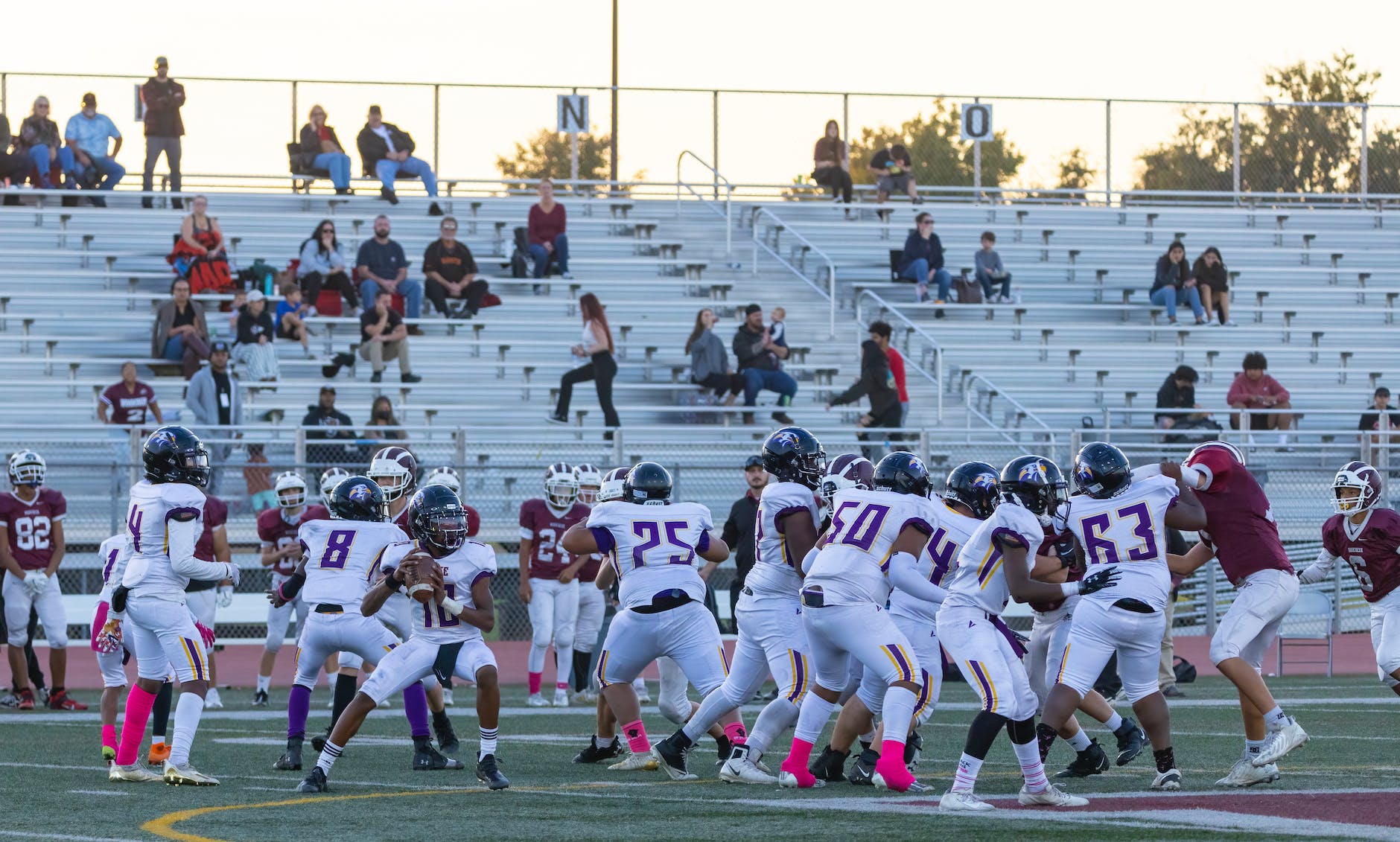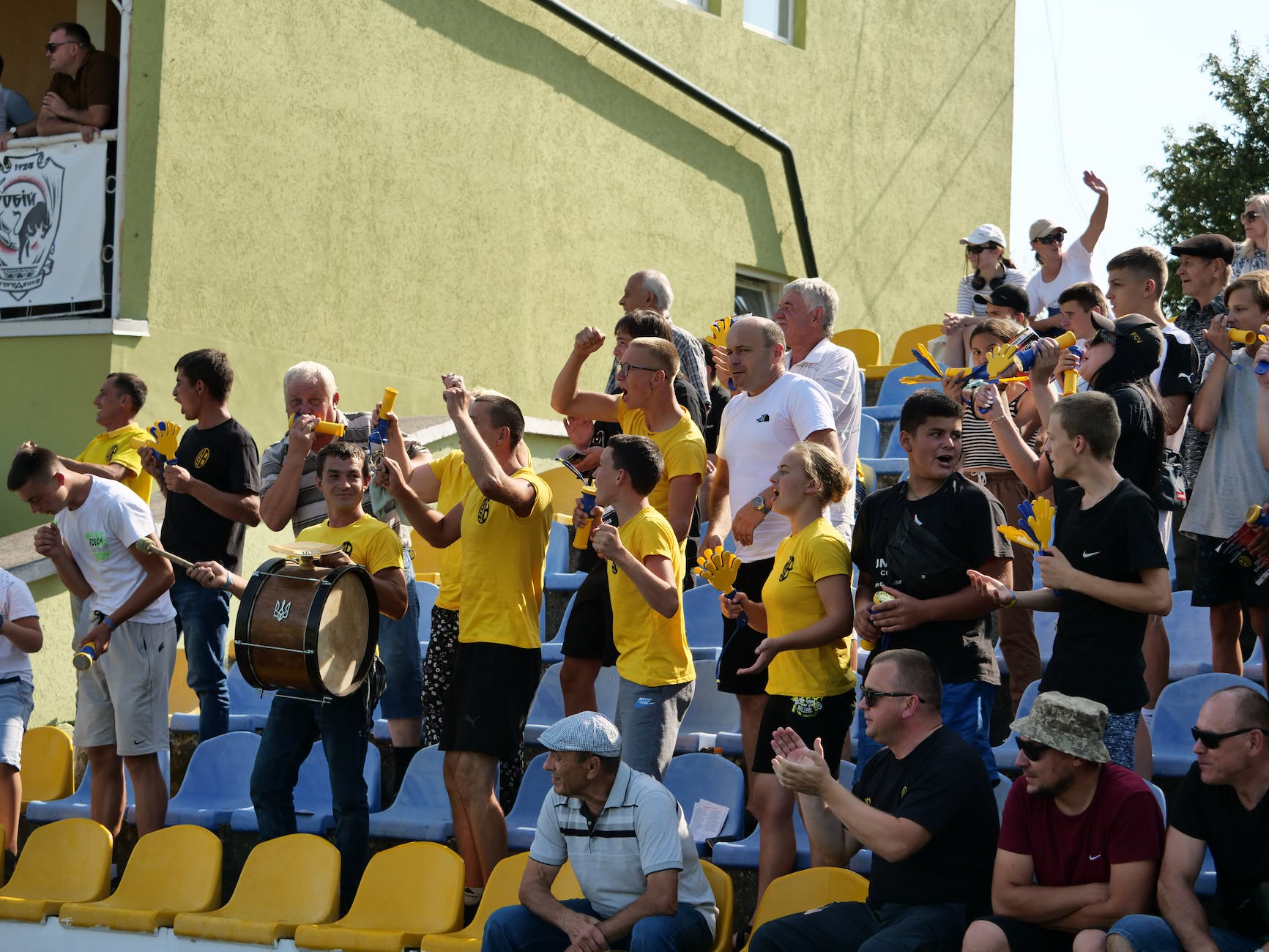Sports events thrive not only on the prowess of athletes but also on the energy emanating from packed stadiums.
In this article, we delve into the crucial realm of sports event promotion, exploring strategies that can elevate attendance figures and breathe life back into stadiums.
The need for packed stadiums goes beyond mere optics; it is a financial and emotional necessity for sports organizations.
Table of Contents
- Introduction
- Understanding the Issue: Why Low Attendance Matters
- Factors Contributing to Low Attendance
- Strategies for Increasing Attendance in Unpopular Sports Games
- Overcoming Attendance Problems in Sports
- Case Studies: Successful Examples of Attendance Improvement
- How to Increase Attendance at High School Sports Games
- The Role of Digital Marketing in Sports Event Promotion
- Implementing Fan Engagement Initiatives
- Future Trends in Sports Event Promotion
- Conclusion
The roar of the crowd, the sea of passionate fans, and the electric atmosphere contribute to the essence of any sporting spectacle. However, many sports organizations find themselves grappling with a challenge – the struggle to fill their stadiums to capacity.
Understanding the Issue: Why Low Attendance Matters
Low attendance isn’t merely an inconvenience for sports organizations; it’s a significant issue with far-reaching consequences.
The financial implications are profound, with ticket sales, merchandise, and concessions forming a substantial portion of a team’s revenue.
Equally important is the impact on fan engagement. A sparse audience diminishes the vibrancy and intensity that define the essence of sports. The emotional connection between fans and teams is weakened when the stadium is only partially filled.
Factors Contributing to Low Attendance
The struggle with low attendance at sports events is like tackling a complex playbook with multiple moves. Let’s break it down into key plays:
- Team Performance: Think of the team as the star player in this game. When they’re not performing well—losing games or lacking that winning spark—fans tend to stay away.
As sports marketing managers, we need to amp up our playbook, showcasing star players, highlighting improvements, and emphasizing the team’s commitment to excellence.
It’s about rekindling that fan excitement and packing the stadium once again.
- Ticket Pricing: Here’s where we talk dollars and sense. The price of tickets is a big player in the attendance game. If fans feel the cost is too high for the experience they get, it’s a hurdle.
Our game plan here involves analyzing the market, understanding who our fans are, and finding that sweet spot where ticket prices are fair yet bring in the bucks.
Think of it as strategic pricing moves, maybe even throwing in some dynamic pricing magic based on demand and the importance of specific games.
- Scheduling Conflicts: In this fast-paced world, everyone’s got a busy schedule. Scheduling conflicts are like opponents trying to steal the ball.
To avoid that, we need to be savvy with our game schedule. Choosing the right days—maybe weekends or local holidays—can make a big difference. It’s about picking our game days wisely to score maximum attendance points.
- Competition with Other Entertainment Options: We’re not the only players in the entertainment game.
Fans have plenty of options. So, our strategy is to understand the local entertainment scene and make sure our game stands out. It’s about crafting marketing messages that scream, “Hey, our game is the place to be!”
Collaborating with other entertainment players can be our power move, broadening our reach and winning over more fans.

In the end, boosting attendance is like a sports marketing championship. It’s about playing smart, optimizing ticket prices, strategizing game schedules, and standing out in the entertainment arena.
By making these moves, we can fill those seats, turning our stadium into a buzzing hub of sports excitement. Game on!
Strategies for Increasing Attendance in Unpopular Sports Games
Turning the tide of low attendance, especially in less popular sports games, requires a targeted and strategic approach.
Sports marketers can employ a range of tactics to enhance visibility and attract diverse audiences:
- Targeting Specific Demographics
- Leveraging Social Media and Digital Marketing
- Collaborations with Local Businesses and Communities
- Innovative Halftime Shows or Entertainment Elements
1. Targeting Specific Demographics
Understanding the demographics that resonate with the sport is crucial. Tailoring marketing efforts to specific age groups, interests, and local communities can significantly boost attendance.
For example, if a sport has a strong appeal to younger audiences, such as breaking (dance sport), incorporating trends from popular culture in promotions can create a connection.
2. Leveraging Social Media and Digital Marketing
The digital realm offers a vast playground for sports marketers.
Utilizing social media platforms to create engaging content, promote ticket offers, and interact with fans in real-time can amplify the reach of promotional efforts.
A well-crafted digital marketing strategy, including targeted ads and email campaigns, can make a substantial impact on driving attendance.
3. Collaborations with Local Businesses and Communities
Establishing partnerships with local businesses and communities can be a game-changer. Sponsoring events, collaborating on promotions, or offering exclusive deals to local residents fosters a sense of community involvement.
When the community feels a personal connection to the team or event, they are more likely to turn out in support.
4. Innovative Halftime Shows or Entertainment Elements
Enhancing the overall entertainment value of the sports event can captivate audiences. Investing in innovative halftime shows, engaging fan contests, or themed events can turn a sports game into a broader entertainment experience.
This not only attracts spectators but also encourages them to stay throughout the entire event.
By strategically implementing these measures, sports marketers can reinvigorate interest in less popular sports games, leading to increased attendance and a more vibrant atmosphere within the stadium.

Overcoming Attendance Problems in Sports
Addressing attendance problems in sports requires a holistic approach that goes beyond the specific challenges of certain games.
It involves a comprehensive examination of the overall fan experience, marketing strategies, and the intrinsic value offered by the sports organization.
1. Importance of a Strong Marketing Strategy
A robust marketing strategy is the backbone of any successful attendance improvement initiative. This includes not only promoting individual games but also building a strong brand presence for the sports organization.
Consistent and compelling messaging across various channels contributes to creating a positive perception among fans.
2. Utilizing Fan Engagement Initiatives
Fan engagement is a key factor in fostering loyalty and increasing attendance. Initiatives such as loyalty programs, exclusive fan events, and interactive online platforms can create a sense of belonging among fans.
When individuals feel connected to the team on a personal level, they are more likely to invest time and money in attending games.
3. Improving the Overall Fan Experience at the Stadium
The in-stadium experience plays a pivotal role in attracting and retaining fans. This involves considerations such as comfortable seating, quality concessions, and engaging pre-game and post-game activities.
A positive and memorable experience encourages fans to return for future events and brings new attendees into the fold.
4. Implementing Dynamic Ticket Pricing Based on Demand
Flexible and dynamic ticket pricing models can adapt to changing demand, ensuring that pricing aligns with the perceived value of the event.
Offering special promotions, discounts for bulk purchases, or dynamic pricing based on the popularity of opponents can incentivize attendance and create a sense of urgency among fans.
By focusing on these fundamental aspects, sports organizations, and sports marketing managers can tackle attendance problems head-on, creating an environment where fans are not just spectators but active participants in the success of the team.
Case Studies: Successful Examples of Attendance Improvement
Real-world examples and fictive case studies of sports organizations overcoming attendance challenges can provide valuable insights for others facing similar issues.
Let’s explore a few noteworthy fictive case studies that showcase effective strategies in action.
1. The Power of Community Engagement: Ballers Soccer Team
Ballers Soccer Team faced persistent low attendance due to a lack of connection with the local community.
Recognizing this, the team implemented a series of community engagement initiatives, including youth sports programs, school partnerships, and local business collaborations.
The result was a noticeable uptick in attendance as the community rallied behind their team.
2. Digital Innovation at its Finest: Ace Tennis Club
Ace Tennis Club leveraged digital innovation to enhance the fan experience.
They introduced a dedicated mobile app that not only provided real-time updates and exclusive content but also allowed fans to participate in virtual events and challenges.
This digital engagement translated into increased attendance as fans felt a stronger connection with the team beyond the stadium.
3. Dynamic Ticket Pricing Success: HIO Golf Events
Facing challenges with fluctuating attendance based on opponents and game significance, HIO Golf Events implemented dynamic ticket pricing.
The system adjusted ticket prices based on demand, ensuring that high-demand events generated more revenue while offering affordable options for less popular matchups. This approach not only optimized revenue but also filled the stadium for every game.
These three fictive case studies highlight the versatility of strategies that sports organizations can employ. Whether through community engagement, digital innovation, or dynamic ticket pricing, successful teams have showcased that a proactive and adaptive approach can yield positive results.
How to Increase Attendance at High School Sports Games
High school sports games, though rich in local spirit, often struggle with attendance compared to larger professional events.
Implementing strategies tailored to the unique dynamics of high school sports can make a substantial difference.
1. Recognizing the Unique Challenges
High school sports face distinctive challenges, including limited resources, varying levels of talent, and competition with other extracurricular activities. Acknowledging these challenges is the first step in formulating effective solutions.
2. Involvement of Local Communities, Schools, and Parents
Building a strong support network within the local community is paramount. Collaborating with schools, parents, and local businesses can lead to increased attendance. Initiatives like school spirit nights, where students receive discounts, can foster a sense of unity and pride.
3. Showcasing the Talent and Stories of Young Athletes
Highlighting the stories and achievements of high school athletes can generate interest and emotional connection. Utilizing social media, local news, and school publications to showcase the personal journeys of young athletes can evoke community pride and attract a larger audience.
4. Creating a Sense of Community Pride
Instilling a sense of community pride in high school sports is crucial. Organizing community events, and parades, and involving local influencers can create a buzz around games. When the community sees the high school sports team as a source of local pride, attendance is likely to increase.
Now, let’s summarize the key strategies for increasing attendance at high school sports events:
| Strategy | Description |
|---|---|
| Recognizing Unique Challenges | Acknowledge and address the specific challenges faced by high school sports events. |
| Involvement of Local Communities | Collaborate with schools, parents, and local businesses to build a strong support network. |
| Showcasing Athlete Stories | Highlight the personal journeys and achievements of high school athletes through various media channels. |
| Creating Community Pride | Organize community events and involve local influencers to instill a sense of pride in the local sports team. |
The Role of Digital Marketing in Sports Event Promotion
Digital marketing has emerged as a powerful tool for sports event promotion, providing avenues for reaching a vast audience and creating meaningful connections. The integration of digital strategies is essential for maximizing visibility and engagement.
Importance of a Strong Online Presence
An impactful digital presence is foundational to any successful sports event promotion.
This includes a well-designed and user-friendly official website, active social media profiles, and a strategic use of search engine optimization (SEO).
A strong online presence serves as a hub for information, ticket sales, and fan interaction.
Utilizing Social Media Platforms for Promotion
Social media platforms are dynamic spaces where sports organizations can engage directly with their audience.
Posting engaging content, including match highlights, behind-the-scenes glimpses, and fan interactions, not only keeps the existing fan base enthused but also attracts new followers.
Leveraging paid promotions on platforms like Facebook, Instagram, and Twitter can significantly amplify reach.
Leveraging Influencers and Ambassadors
Collaborating with influencers and brand ambassadors who align with the values of the sports organization can extend the reach to new demographics.
Influencers can create authentic content, share their experiences attending games, and encourage their followers to participate, creating a ripple effect of excitement and interest.
The Rise of AR/VR Experiences
The integration of augmented reality (AR) and virtual reality (VR) experiences is a trend shaping the future of sports event promotion.
Creating immersive experiences, such as virtual stadium tours or AR-enhanced match previews, can captivate audiences beyond the physical confines of the venue. This not only attracts tech-savvy fans but also positions the sports organization at the forefront of innovation.

By embracing digital marketing strategies, sports organizations can transcend geographical boundaries and connect with fans on a global scale. The immediacy and interactivity of digital platforms offer unprecedented opportunities to create a continuous buzz around sports events.
Implementing Fan Engagement Initiatives
The relationship between sports organizations and their fans goes beyond the duration of a game; it’s a year-round connection that requires nurturing. Implementing effective fan engagement initiatives is key to building a loyal fan base and ensuring sustained attendance.
Creating Loyalty Programs
Loyalty programs are a tried-and-true method for retaining fans. Offering perks such as exclusive merchandise, early access to tickets, or special events for loyal fans not only incentivizes attendance but also fosters a sense of belonging among supporters.
Organizing Fan Events and Meet-and-Greets
Organizing events specifically for fans, such as meet-and-greets with players, fan festivals, or exclusive Q&A sessions, provides a personal touch. These interactions make fans feel valued and deepen their emotional connection with the team, translating into increased attendance at games.
Incentivizing Attendance with Exclusive Merchandise or Discounts
Creating exclusive merchandise or offering discounts for attendees adds a tangible incentive for fans to show up. Limited-edition items or special game-day discounts create a sense of urgency, encouraging fans to be part of the live experience.
Now, let’s summarize the key fan engagement initiatives:
| Initiative | Description |
|---|---|
| Loyalty Programs | Offer exclusive perks to loyal fans, fostering a sense of loyalty and commitment. |
| Fan Events and Meet-and-Greets | Organize events that provide fans with opportunities to interact with players and be part of the team community. |
| Incentivizing Attendance | Create incentives such as exclusive merchandise or discounts to encourage fans to attend games. |
Future Trends in Sports Event Promotion
The landscape of sports event promotion is ever-evolving, driven by technological advancements, changing consumer behaviors, and a growing global audience. As we look to the future, several trends are poised to shape the way sports organizations connect with their fans and fill stadiums:
Integration of Technology
The seamless integration of technology is set to enhance the fan experience. Innovations like augmented reality (AR) and virtual reality (VR) will not only provide immersive experiences for in-person attendees but also allow remote fans to engage with the event in unprecedented ways.
Sustainable and Eco-Friendly Initiatives
Environmental consciousness is gaining prominence in all industries, including sports. Sports organizations are likely to embrace sustainable and eco-friendly initiatives, from reducing carbon footprints in stadium operations to promoting environmentally responsible practices among fans.
- Implementation of green technologies, such as solar panels and energy-efficient lighting, in stadiums.
- Encouraging fans to adopt eco-friendly practices, such as recycling during events.
- Collaborating with environmental organizations for joint initiatives.
Expansion into Global Markets
The digital era has dismantled geographical barriers, allowing sports organizations to tap into global markets. Streaming services, social media, and online communities offer opportunities for teams to connect with fans worldwide, transcending time zones and borders.
Continued Emphasis on Fan Engagement
The future of sports event promotion lies in sustained fan engagement. Building communities around sports teams through online forums, fan clubs, and interactive digital experiences will be integral to maintaining enthusiasm and attendance.

As sports organizations navigate these future trends, adaptability and a forward-thinking approach will be key to staying at the forefront of an ever-changing landscape.
Conclusion
In the dynamic world of sports event promotion, the quest for full stadiums is an ongoing challenge met with innovative solutions. From understanding the intricacies of low attendance issues to implementing targeted strategies for specific challenges, sports marketers play a pivotal role in shaping the fan experience.
As we conclude our exploration, it is evident that the path to full stadiums involves a multifaceted approach:
- Strategic targeting of demographics to create tailored promotions.
- Utilizing the power of digital marketing for widespread reach and engagement.
- Implementing fan engagement initiatives that foster loyalty and commitment.
- Anticipating and embracing future trends, from technological integrations to sustainable practices.
By combining these elements, sports organizations can not only address current attendance challenges but also lay the groundwork for a future where stadiums are vibrant hubs of excitement, uniting fans from all walks of life in a shared celebration of the sports they love.

Hello! I’m Magnus Berglund, a seasoned trendspotter and proud founder of SportsBizTrends.com.
With over a decade of experience as an independent advisor and consultant, I have specialized in business development and creative marketing within the sports industry. This has, among other things, resulted in a book about sports sponsorship (only available in Swedish for the moment).
If you find my writing interesting, please share it with your colleagues and friends. It would be greatly appreciated!
And yes, I do freelance consulting and provide lectures at industry events, business networks, board meetings, and similar occasions. However, since I also work as a Marketing Manager for an industrial company, I choose the occasions wisely.
That said, don’t hesitate to contact me with your inquiry.
With experience from various assignments in strategy, tactical activations, and valuation of sponsorship (from the grassroots level to the English Premier League), I am happy to share my insights and ideas in this fast-paced industry.
For more information about me and my work, including my contact details, please visit the About page, or connect with me via LinkedIn.








